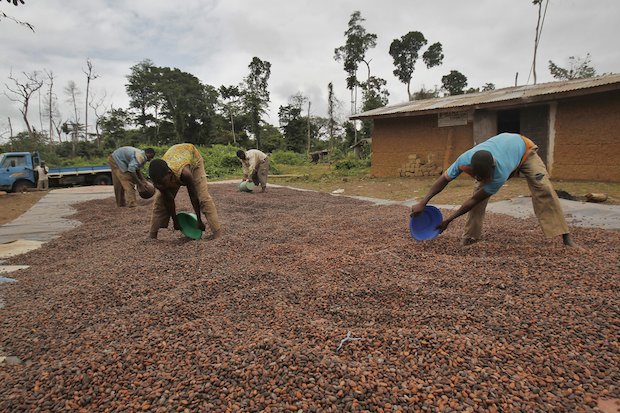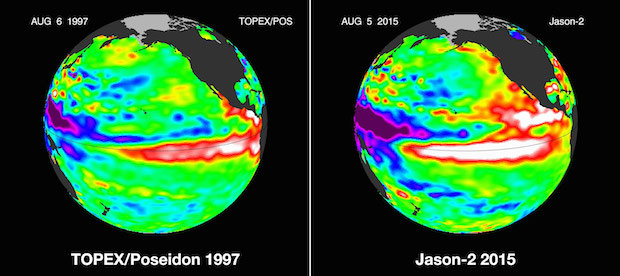Get ready for one of the strongest El Ninos ever
Forecaster can say with 95 percent confidence that this El Nino will last through the winter and is shaping up to be one of the strongest ever.
The weather experts from National Oceanographic and Atmospheric Administration's Climate Prediction Center said that weekly sea surface temperatures in the eastern half of the tropical Pacific had warmed in August and were 3.6 degrees higher than average -- one of the key indicators that this El Nino could be one for the record books.
Trade winds have also been weaker than average over much of the equatorial central and eastern Pacific, another indicator of a stronger event. The latest offer increased certainty that we could be in for what one forecaster described as a "Godzilla" El Nino.
An El Niño -- meaning in Spanish "the little boy, or Christ child" -- is created when the equatorial waters of the Pacific Ocean warm significantly.
Mike Halpert, deputy director, NOAA's Climate Prediction Center, said this one -- which is expected to weaken by the Spring -- could be the third strongest behind the 1986-88 El Nino. The biggest on record, the 1997-98 El Nino, sparked widespread storms and flooding that caused more than $4 billion in damage and killed 189 people nationwide.
"At this point, it could be one of the three strongest we have seen," Halpert told reporters, adding that this could be second if you look at El Ninos that peak in winter.
"1997 by any measure ... is still stronger than 2015," he said, noting that a key then was winds reducing much further and even reversing and blowing from West to East. "Even just looking the oceans in the eastern part of the basin, 97 was almost as twice as warm as what we are seeing right now. "
Around the world, nations are girding for the expected flooding, storms, crop failures and shifts in commercial fishing that would be expected from a strong El Nino. But in the United States, the effects so far have been minimal, although Halpert said the weak Atlantic Hurricane season was partly due to this El Nino.
In August, NOAA said there was a 90 percent chance that this Atlantic hurricane season that runs through Nov. 30 would be relatively quiet, blaming atmospheric conditions associated with El Nino.
"What we can attribute to El Nino is that have seen increased shear," Halpert said "Basically, the winds aloft have been quite strong. We have seen seven or eight storms but none of them have had the opportunity to develop because of this shear. As the storm gets going, the tops get sheared off and that is not a favorable environment for tropical systems."
But in the coming months, parts of the country especially on the West Coast are expected to see more frequent and intense storms and heavy rains. Tropical cyclones are expected to increase in other parts of the world.
"The most reliable El Nino signal over the U.S. is a wet signal in the Gulf Coast and Florida. At this point, we have fairly high probability for that," Halpert said.
"El Nino is actually good for some parts of the country. It generally favors a warm Northern Plains and Northern Rockies," he said. "The United States is one of the big winners economically regarding El Nino. The increase to GDP can be in the billions of dollars. Often, that is just savings on your heating bill if you live in North Dakota."
But the forecasters warned that even heavier rains out West wouldn't be enough to alleviate the four years of record breaking drought in California and other parts of the Pacific Northwest that have left reservoirs far below capacity and groundwater systems significantly stressed.
"El Nino events do have a tendency to produce wetter than average winters in southern California but a single El Nino event is unlikely to erase four years of drought even there," Kevin Werner, NOAA's director of western region climate services, said. "Most of the important water resources originate from places in the Sierra Nevada and the Rocky Mountain range and those places have little or no correlation to El Nino."
Werner said the Pacific Northwest could actually suffer even more, since El Nino is projected to bring drier than average conditions to places like Washington.
"It's entirely possible that we could see continued drought across many areas of the West at the same time that we see a strong El Nino event and even flash flooding in the southwest," he said.

